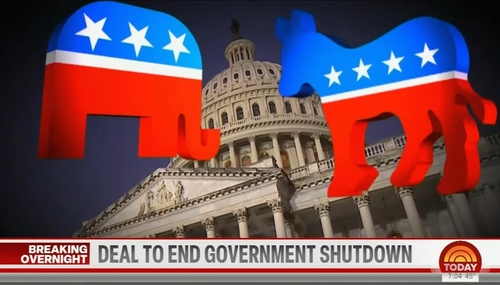The front page of the Times Sunday Business section is dominated by reporter Landon Thomas Jr.’s profile of conspiracy-mongering author John Perkins (“Confessions of an Economic Hit Man).”
In “Confessing to the Converted -- How a Book Tries to Tap Into Fears of ‘Corporatocracy,” Thomas begins:
“It is standing room only in Transitions, a New Age bookstore in Chicago, and John M. Perkins, the author of ‘Confessions of an Economic Hit Man,’ is describing to his audience the quandary that faces Evo Morales, the recently elected president of Bolivia. Leaning low into the microphone, Mr. Perkins affects a deep conspiratorial whisper as he sets the scene for the imagined encounter between the new president and the representative of the multinational corporate interests Mr. Morales had vilified during his campaign.”
It’s revealing just what sort of folks find Perkins’ book credible:
“As the rapt crowd clucks and murmurs as if let in on an unspeakable confidence, Mr. Perkins cautions that he is speaking metaphorically. But for an audience already punch drunk on Mr. Perkins's very own tales of corporate skullduggery, his allegory -- overripe though it may be -- carries not only a ring of truth but also clues to a long history of unexplained endings.
“‘And what about those crashes of J.F.K. Jr. and Paul Wellstone?’ a woman in the audience asks. ‘They were awfully suspicious.’
“Yes, Mr. Perkins says with a nod, and reels off the deaths of others in airplane crashes: Gen. Omar Torrijos, the former president of Panama, in 1981; Jaime Roldos Aguilera, the president of Ecuador, also in 1981; and even Senator John G. Tower, the Republican from Texas, who perished with 22 others on a commercial flight in 1991. ‘We have had a lot of plane crashes,’ Mr. Perkins says ominously.”
A paranoid left-wing audience may indeed find a “ring of truth” to the suggestion that the corporate-government complex murdered Sen. Paul Wellstone and JFK Jr., but does that mean the Times has to relay it without critical comment?
Thomas takes a liberal line to defend Perkin’s sub-Michael Moore appeal:
“The idea that corporate interests have undue influence over White House administrations has long been a staple of anti-establishment politics. But during the Bush administration, some recent events have dragged this notion further into the mainstream. United States soldiers and businesses are firmly entrenched in Iraq and now the federal government plans to give $7 billion in royalty concessions to an oil industry already enjoying record profits. According to a recent Gallup poll, 70 percent of those questioned said they believed that big business had too much influence over Bush administration decisions.”
The Times finally raises doubts deeper into the story, and asks a question that should have been asked many, many paragraphs beforehand:
“But in the wake of the controversy over James Frey, who embellished aspects of his own best-selling tale of personal redemption, ‘A Million Little Pieces,’ one feels obliged to ask: Is it all true?”
The State Department, for one, seriously http://usinfo.state.gov/media/Archive/2006/Feb/02-767147.html doubts Perkins’ story:
“Perkins revealed his fondness for conspiracy theories during a January 10 presentation at a bookstore in Washington. At one point, he claimed, falsely, that the U.S. government had been involved in the assassinations of President John F. Kennedy, Senator Robert F. Kennedy, Martin Luther King Jr., former Beatle John Lennon, and several unnamed U.S. senators who had died in plane crashes.
“In response to a question about the September 11, 2001, attacks, he cautioned that although he did not know much about this subject he thought that if a bank had been robbed, the police would investigate the possibility that it had been an ‘inside job,’ implying that the U.S. government may have been involved in the 9/11 attacks. He also recommended a Web site that puts forward the false claim that no plane hit the Pentagon on September 11, 2001.”
For more examples of New York Times bias, visit TimesWatch.




